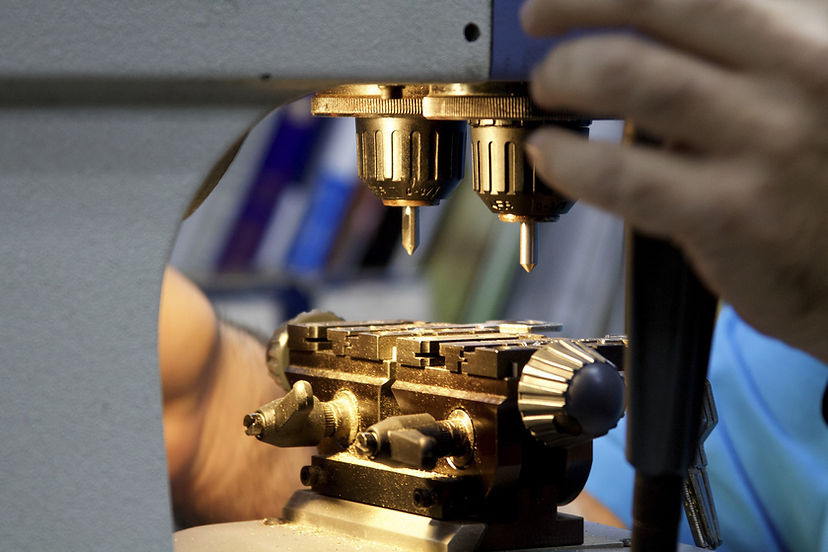
AT YOUR DISPOSAL SINCE 1993

Intellectual and Industrial Properties
Our Services
In the complex and ever-evolving landscape of innovation and creation, two fundamental pillars stand tall: intellectual property and industrial property. These twin concepts are cornerstones of the modern economy, fostering innovation and protecting the fruits of human ingenuity. In this article, we will explore the realms of intellectual and industrial property, shedding light on their significance, differences, and their vital roles in shaping our world.
Intellectual Property: Cultivating Creativity
Intellectual property is the broad category that encompasses a range of intangible assets. It is all about protecting the creations of the human mind. Key forms of intellectual property include:
Copyright: This protects original works of authorship, such as literary, artistic, and musical creations. It grants the creator exclusive rights to reproduce, distribute, and adapt their work.
Trademarks: Trademarks are distinctive signs, symbols, or words used to identify and distinguish products or services. They are crucial in establishing brand identity and consumer trust.
Patents: Patents grant inventors exclusive rights to their inventions. They are a driving force behind technological innovation, providing inventors with the motivation to develop and disclose their groundbreaking ideas.
Trade Secrets: Confidential business information, such as manufacturing processes, customer lists, and formulas, falls under trade secrets. Protection involves maintaining the secrecy of this valuable data.
Industrial Property: Forging Tangible Creations
Industrial property focuses on tangible, physical creations and innovations. It encompasses forms like:
Industrial Designs: These are all about the aesthetic and visual aspects of industrial products. Industrial design protection ensures that the unique appearance of a product is safeguarded.
Patents (again): Patents, often associated with intellectual property, also intersect with industrial property. In the context of industrial property, they protect the functionality of inventions, ensuring they cannot be copied or used without authorization.
Geographical Indications: This form of industrial property safeguards products closely linked to a particular geographical origin, such as Champagne from the Champagne region in France. It protects against unauthorized use of the geographical name.
Plant Varieties: Plant breeders can protect new plant varieties they've developed, enabling them to have exclusive rights to produce and sell these new plant varieties for a set period.
The Interplay between Intellectual and Industrial Property
The distinctions between intellectual and industrial property are not rigid. They often intersect, especially in the world of inventions. For example, when a new and innovative product is developed, it may be protected by both a patent (as intellectual property) and industrial design rights (as industrial property) to safeguard its unique appearance.
The Significance of Intellectual Property and Industrial Property
Intellectual property and industrial property are critical for a multitude of reasons:
Encouraging Innovation: These forms of protection incentivize inventors and creators to share their ideas with the world. In doing so, they promote innovation and creativity.
Economic Growth: Intellectual property and industrial property rights are essential for economic development, as they drive industries, create jobs, and foster competition.
Consumer Protection: Trademarks and geographical indications help consumers make informed choices by ensuring that products meet certain quality standards and come from a specific origin.
Cultural Preservation: Intellectual property protection also plays a role in preserving and promoting cultural expressions and traditional knowledge.
International Cooperation: In a globalized world, international agreements and organizations help harmonize intellectual property and industrial property protection across borders.
The Future of Intellectual and Industrial Property
In an era defined by rapid technological advancements, the roles of intellectual and industrial property continue to evolve. Emerging technologies, such as artificial intelligence and biotechnology, pose new challenges and opportunities for IP protection. The ongoing debates about striking the right balance between innovation and public access to knowledge will continue to shape the future of these fields.
Conclusion
Intellectual and industrial property are twin pillars that underpin our modern world of innovation and creativity. They protect the ideas and creations that drive economic growth, preserve cultural heritage, and provide incentives for new discoveries. The dynamic interplay between these two forms of property safeguards our collective intellectual wealth while promoting a culture of innovation. In the ever-changing landscape of technology and human creativity, intellectual and industrial property will remain at the forefront.